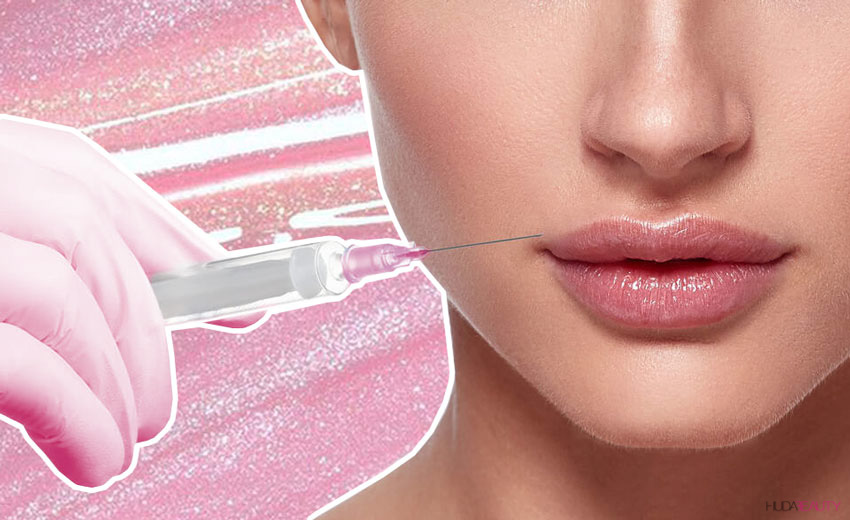Fillers 101: Everything You Need to Know Before Getting Injected

We wouldn’t be surprised if you knew someone who openly talked about getting filler. And we wouldn’t be surprised if you knew and interacted with people who had filler without even realizing they’d “had work done.” In 2017 alone, there were 2.69 million soft tissue filler procedures, which is a 3% jump from 2016. And here’s the thing: the filler forecast only calls for more. Medispas are a $4 billion dollar industry, and they’re expected to grow 8% annually.
Despite filler’s popularity, there’s still some confusion surrounding it. Like, what are fillers even made from? Does it stay stuck under your skin forever? Where can you inject the stuff? And how much does filler cost? With help from a dermatologist and physician assistant, we’re answering all those Q’s and more.
What is Filler?
The majority of fillers – including the two most popular brands, Juvederm and Restylane – are made out of hyaluronic acid, which is a gel-like substance that’s naturally found in the body.
Filler Material, Aka What Are Fillers Made Of
“There are many different hyaluronic acid fillers, and different products are ideal for different locations of the face,” says Dr. Hadley King, a board-certified dermatologist based in New York City. “For example, a thicker filler like Juvederm Voluma is ideal for the cheekbone area, while a thinner filler like Restylane Silk is great for natural-looking enhancement of the lips.” In addition, medium viscosity fillers are ideal for nasolabial folds (lines from the side of the nose to the outer corners of lips) and marionette lines (those lines that run from the corner of the lips vertically down the chin).
The difference between these products is the molecular weight, and how the hyaluronic acid molecules are cross-linked. The tighter the “cross-linking,” the higher the percentage of molecules and the thicker the gel. A reputable injector will know exactly what type of filler to place and where.
Posts You'll Love:
Other Types of Dermal Fillers
While hyaluronic acid filler is the most common type, there are a couple of other forms used on the reg:
Radiesse
This type of filler is made from a substance called calcium hydroxylapatite, which is a mineral-like compound naturally found in human bones. (It’s synthetically produced for Radiesse, which means zero animal products are used.) “The benefit to this filler is that it can address immediate volume depletion and will stimulate collagen production in the area of injection,” says Dana Kirk, a physician assistant working under Dr. Jessica Wright at Rejuvenate Austin
Sculptra
This form is made of poly-L-lactic acid, a synthetic, non-toxic, biodegradable substance. “Sculptra is unique in that it is a particulate filler, meaning that it consists of particles of poly-L-lactic acid suspended in water. It’s also unique because it stimulates the body’s own production of collagen. For that reason, this type of dermal filler is known as a stimulator,” says Dr. King. “Note that Sculptra is unlike the other fillers in that it does not produce immediate results. Instead, it stimulates your own body’s production of collagen, so results appear gradually over a period of a few months. This makes the results very natural looking and longer-lasting.
Where Can You Inject Filler?
Filler is primarily used to smooth wrinkles around the mouth, eyes, and brows, to lift and enhance cheeks, to plump lips, and to soften nasolabial folds. It can also be used to smooth chin wrinkles, rejuvenate hands, and even fill in deep acne scars. Some injectors also use filler to change the shape of a patient’s face, including filler nose jobs and chin augmentation.
Check out the process of having cheek fillers to plump the cheeks with hyaluronic acid:
Is Filler Going to Give Me an Instant Boost?
Unlike Botox, which takes about a week to two weeks to start working, the visual effect of fillers can be seen immediately (except for Sculptra, as noted above). “This is why so many people get addicted to fillers,” says Kirk.
How Long Does Filler Last?
How long filler lasts depends on what type you’re getting and where it’s going, but in general, you can expect it to last anywhere from six months to two years.
“Radiesse provides instant results and stimulates collagen production in the months following injection, so results last for quite a while, and Juvederm Voluma has a special cross-linking that allows it to last up to two years,” says Kirk. “Lip fillers typically last six or so months, and Juvederm Volbella and Restylane Silk last about six to nine months in fine lines.”
Two additional factors that affect how long the filler lasts is how frequently the injected area moves and your unique metabolism. For instance, your mouth moves a lot so the filler doesn’t last as long here compared to other areas. And your body may absorb the filler more slowly or more quickly compared to other people.
Posts You'll Love:
How Much Do Dermal Fillers Cost?
The answer to this also depends on where you’re getting filler, what type of filler you’re using, and how much your injector recommends.
Prices generally range between $500 and $1500 per syringe, with one to three syringes recommended for your first visit. Touch-up visits are less expensive since you don’t need as much. Dr. King says, “On average, you might want to repeat filler injections every six to 12 months for shorter-duration fillers, and every one to two years for longer-duration fillers.”

Can Fillers Make People Look “Done”?
Kirk says this is the filler myth that frustrates her most. “I hate that people feel like any amount of filler will make you look fake. The best injections are not even detectable,” she says. “My goal is for my clients to look rested and refreshed. You should look younger – but never ‘done.’”
The key to avoiding an over-filled “fake” look is to seek an injector that’s on top of their A-game. Read up on all their customer reviews, check out their before and afters, and never go to someone who doesn’t seem 100% legit. Kirk says, “The truth is that improper depth of injection, improper choice of filler, and improper dosages can all lead to an overfilled look.”
Face Filler Side Effects
Filler is obvi a popular way to enhance your appearance, but that doesn’t mean they shouldn’t be taken seriously. Fillers are a medical procedure and ought to be treated as such.
“They offer a great non-surgical option for volumizing the face, but they are not without serious possible adverse effects, including infection and vascular occlusion that can lead to skin necrosis, stroke or permanent blindness,” says Dr. King. “This is why it is critical for patients to see a board-certified dermatologist or plastic surgeon who is well-trained and experienced in these procedures.”
Again, do your research and go to someone who knows their stuff and you’ll be in good hands. If you’re not sure about fillers, check out these amazing lifting and tightening treatments that are the perfect alternative to Botox and fillers.























Leave a comment